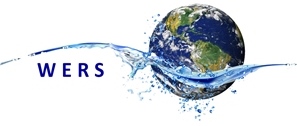Activities
Onstad Elected to Green Builder Coalition Board
In a recent vote by Coalition Members, Steve Onstad was elected to the Board of Directors. He will join Craig Conner and Kim Shanahan, who have 1 year and 2 years remaining on their terms, respectively. Drew Brandt’s Board term expired this year. However, since he is now the most recent past Chair of the Board, he will transition into the Ex-Officio role.
 Steve is the Founder of EverGreen Building Solutions, LLC, which provides green building services including building science consulting, Home Energy Rating System analysis, Santa Fe green code compliance, Sustainable Building Tax Credit application assistance and LEED compliance assistance. Steve is a RESNET/HERS and Green Rater, LEED Green Rater, Passive House Institute PHIUS+Rater, National Green Building Standard Green Verifier, Water Efficiency Rating Score (WERS)® Verifier, EPA WaterSense Inspector, Energy Star Partner and DOE Zero Energy Ready Home Partner. Steve has a Bachelor of Science in Business with a minor in Engineering, Magna cum Laude, from the University of Colorado and a Masters of Business Administration from New York University.
Steve is the Founder of EverGreen Building Solutions, LLC, which provides green building services including building science consulting, Home Energy Rating System analysis, Santa Fe green code compliance, Sustainable Building Tax Credit application assistance and LEED compliance assistance. Steve is a RESNET/HERS and Green Rater, LEED Green Rater, Passive House Institute PHIUS+Rater, National Green Building Standard Green Verifier, Water Efficiency Rating Score (WERS)® Verifier, EPA WaterSense Inspector, Energy Star Partner and DOE Zero Energy Ready Home Partner. Steve has a Bachelor of Science in Business with a minor in Engineering, Magna cum Laude, from the University of Colorado and a Masters of Business Administration from New York University.
“I’m very happy to have someone with Steve’s background join our Board,” said Executive Director Mike Collignon. “He’s the 2nd WERS Verifier in the history of the program, and I know from working with him for 5+ years that his integrity is top-notch.”
Onstad’s Board term will expire in October 2022.
Vermont to Include WERS in Energy Code
In the summer of 2020, the state of Vermont will implement a new energy code. When they do, one of the compliance options will look quite a bit different than typical state energy codes.
Builders will have 3 compliance paths. The first one in the list is called “Package Plus Points”. It calls for builders to choose one of the five base packages, which include insulation and fenestration prescriptive requirements. There are packages for standard construction, SIPS, a “thick wall”, “cavity only” insulation method, and log homes. Next, builders will need to consult a table to determine how many points they need to obtain. The required number of points can vary from 4-10, based on building size. Finally, they’ll choose a number of point-earning options from a different table to achieve the required number of compliance points. These points can be accrued by improving envelope insulation, achieving better air leakage results, installing more efficient equipment, taking various water efficiency measures, using renewables or utilizing a couple other innovations like batteries, monitoring systems or EV-ready wiring.
 In the water efficiency section, builders could earn 2 points by getting their home(s) certified through WERS. To provide some context, multifamily dwellings under 2,000 s.f. only need to obtain 4 points. Single-family dwellings under 2,000 s.f. need to attain 5 points; 2,000-4,000 s.f. homes are required to earn 7 points and anything over 4,000 s.f. must get 10 points. In the Points table, only 5 of the 23 choices have more points than the water certification option.
In the water efficiency section, builders could earn 2 points by getting their home(s) certified through WERS. To provide some context, multifamily dwellings under 2,000 s.f. only need to obtain 4 points. Single-family dwellings under 2,000 s.f. need to attain 5 points; 2,000-4,000 s.f. homes are required to earn 7 points and anything over 4,000 s.f. must get 10 points. In the Points table, only 5 of the 23 choices have more points than the water certification option.
“Vermont clearly sees the importance of the energy-water nexus,” said WERS Development Group Chair Mike Collignon. “We applaud the state for including WERS in their forward-thinking energy code.”
The same 2 points are attainable by certifying through the EPA’s WaterSense for Homes program. The Coalition has been in discussions with the EPA for nearly 2 years on the integration of WERS into WaterSense for Homes 2.0, so that dual certification is relatively seamless. The revised WaterSense for Homes program is expected to launch in Q1 2020.
Log on to our Facebook page and share your opinions.
